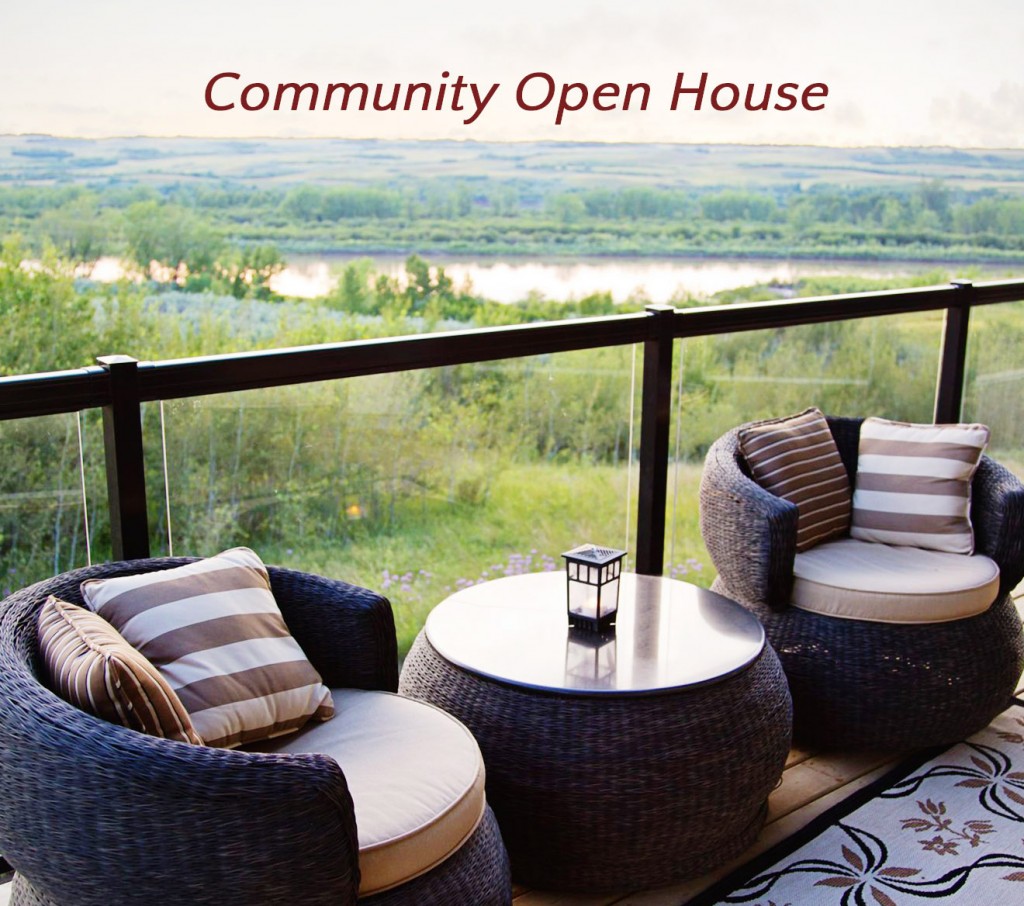In the second installment of our Meet the Neighbours series, we’re happy to introduce you to Amber and Matt. They’re in the process of building a custom home here in the river valley and we can’t wait to welcome them home to Sarilia!
Where are you both from originally?
Matthew and I both grew up in Saskatoon.
What was it about Sarilia that made you decide to buy a lot and build your home here?
So many things! First of all, the beauty of the place. The landscape is such a wonderful mix of prairie, hills, treed lots, and then the river. Having grown up in the city, and always having loved the access the city provides to entertainment, shopping, restaurants, etc., it was going to take a very special place to get me to build outside the city.
To me, Sarilia provides the peace and beauty that comes from country living, but with the community and neighbours that protects from that feeling of isolation I think I would have on an acreage.
Also, Matthew and I were not looking for a property that required the type of upkeep that some country/rural lots require, considering that we both work. On top of this, we feel that it is close enough to the city that we can handle the commute quite easily. In fact, I find that the drive out to Sarilia after a long day at work helps me to unwind and relax.
The cost of the lots at Sarilia compared to how much lots cost in the city means that we can build a home that we’ll love, and not have to sacrifice because of an expensive lot. Another major reason was that when we visit, we feel a real sense of community. We can’t wait to finally move out there and meet all of the neighbours.
Who are you building with?
We are building with a company called CNS Developments, who is doing a custom build with us. Curtis Mann, the builder, has been amazing and very accommodating. We’re very happy with him.
What are you most looking forward to about living in the river valley?
Waking up every day surrounded by such beauty! Matthew and I really value our downtime outside and our time with friends and family. I can’t wait to entertain out on our deck with the sun setting over the river valley! We currently don’t have children, but I can’t wait to one day raise our children out there. I love the idea of kids being able to play outside in the woods and the fields, discovering nature or wandering around and riding their bikes with the other kids in the neighbourhood and not having to worry about busy streets. I love that we’re going to live in a community where we know everyone.
What activities do you both enjoy?
We love riding our bikes and going for walks. I love to cook and bake. Right now I have summers off because I work in the school system, so I spend as much time as I can up at our family’s cabin at Nesslin Lake where we fish or just go out on the boat. Other than that, on weekends we spend a lot of time socializing with friends and family. Every Sunday we get together for supper with my family. I can’t wait to be able to host and have them out to our new home.
Tell us something about yourselves…
I’m a counsellor in the school division, which is a new job since I graduated with a master’s degree from the U of S. Two things that I never thought I would do in my life would certainly be working in the school system and living in the country, and I couldn’t be more thrilled that last year brought both of those things into my life!
Matthew and I have also made a promise to ourselves that we will make travel a priority in our lives. My favourite trip that we have gone on is our honeymoon, where we flew to Portland and then rented a car and took a road trip along the Pacific Coast Highway for two weeks, ending in San Francisco.








